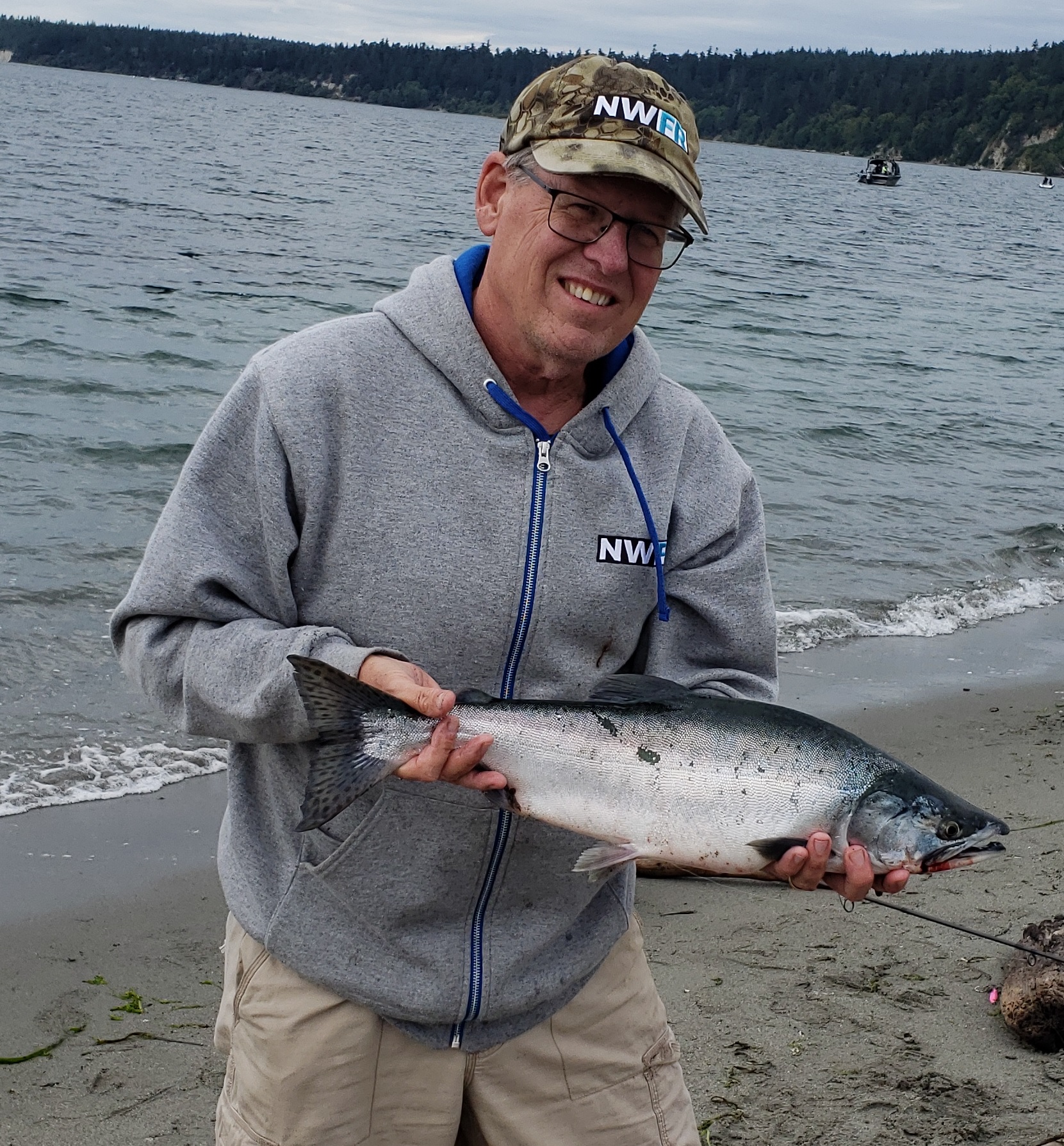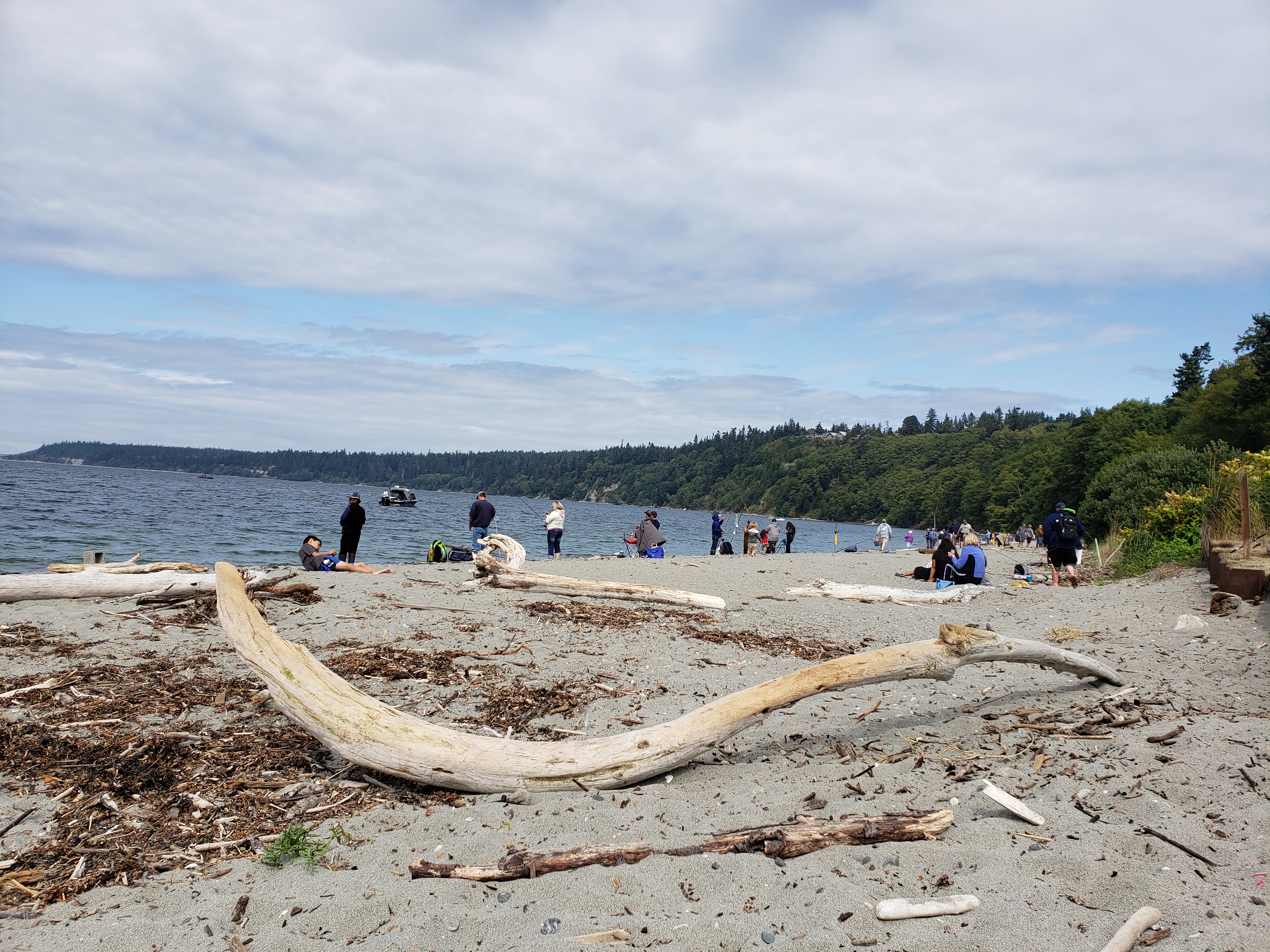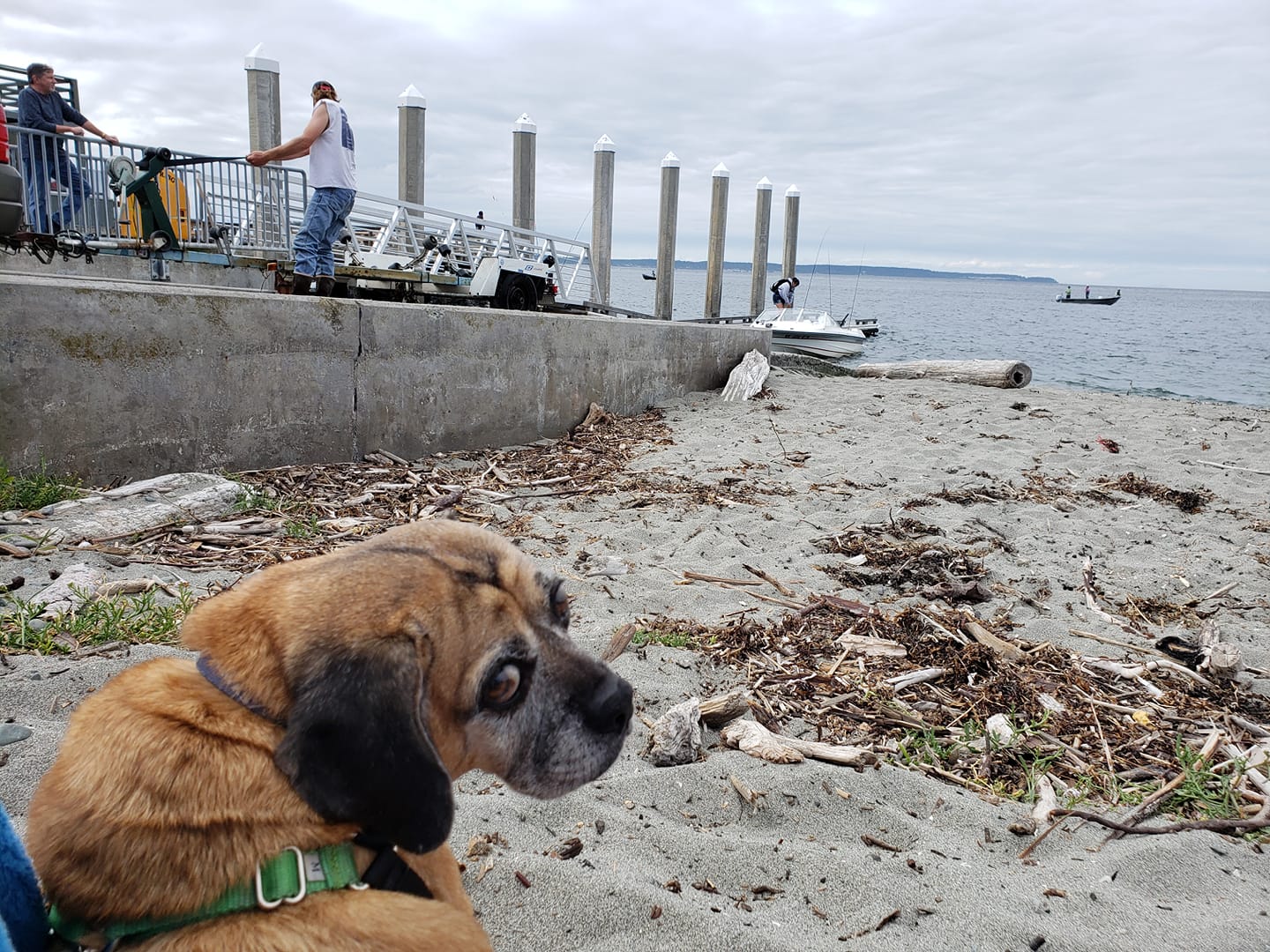South Whidbey Island Beach Salmon
by
Mike Carey, September 02, 2019
I attached the two ounce flutter jig to my line and heaved back on my rod, the weight of the lure and flex of the rod loading for maximum distance. At just the right instant my thumb released pressure on the line and I watched with satisfaction as the lure propelled itself ever farther from the beach, landing just short of an anchored boat, startling the anglers on board. Closing my bail I reeled in the slack line and had made just one rod twitch when I felt the rod double over and the unmistakably feel of a salmon head shake telling me I was into my first Whidbey Island shore-fished salmon. I worked the fish back in keeping the line tight so as to not let slack line allow the barbless hook to slide out. As the fish got closer to shore I could see it was a chrome-bright four pound pink salmon. The last few feet I slide the salmon on to the sandy beach and quickly dispatched the fish, my first ever beach caught pink salmon.
For those anglers without a boat, the south end of Whidbey Island offers a unique opportunity to catch salmon as they return to their native rivers and streams in the Puget Sound area. Salmon migrating in from the ocean pass through the Strait of Juan De Fuca, then turn and head south into Puget Sound, heading for multiple rivers like the Skagit, Snohomish, Green, and Puyallup. As these fish make their turn they may be out in the middle of the Sound, but, many will hug the shorelines, moving in and out with the tides. For anglers this presents the perfect opportunity to catch a salmon from the beaches of Puget Sound. South Whidbey Island in particular has several locations, and reasons, to fish at.
This year, an odd numbered year, means anglers get a bonus – pink salmon, AKA humpies. Shore anglers start seeing humpies along the beaches in early August. As the run peaks, by the third week of August, it’s not unusual to be able to get a quick limit of these spunky 3-4 pound fish. As August transitions into September the target species changes from humpies to the prized fall salmon, coho, also known as silvers. While the pinks provide sheer numbers and relative ease of catching, the coho offer much bigger fish – anywhere from an average of 5-6 pounds up to the greatly sought after “hook-nose” 12-15 pound specimens. Anglers will see these fish arriving in mid to late September.
Before I dive into locations though, let’s take a look at the gear you should consider bringing with you as you target these salmon from the shoreline.
Fishing from the shore requires first and foremost a good casting rod. Most anglers will use a spinning reel, although level winds will certainly work. The goal is distance. The farther out you can cast your offerings, the more opportunity to encounter a salmon. I prefer a rod at least 8 ½ feet, but ideally 10 feet is what I like. The reel should be a 200 or 300 series spool holding plenty of line. You can go with monofilament or braid. My reel has 20 pound mono on it. The reel doesn’t have to be a salt water reel, but it helps. Regardless, at the end of the day you should give your gear a good spray down with fresh water to remove the salt. My rod is medium heavy and rated to toss ½ to 3 ounce lures. It’s important to pay attention to the lure rating on your rod. Why? Think of your rod as a sling shot. As you bring the rod back behind you and then forward, the rod “loads” with the weight of the lure and the forward momentum the angler gives it. At the exact right moment, as the rod moves past your head and forward, you’ll release the line and send your offering on its way. A lot of energy is built up and released by your rod. If the rod isn’t built to handle the weight of the lure, it’s very possible to break today’s graphite rods from the pressure built up by the whipping action.
We’ve got the rod and reel covered, but what about your offerings to the fish? Well, there’s a wide variety of choices available. One of the favorite lures would be a buzz bomb. This stable of shore anglers should be jigged back to shore, allowing it to flutter downward as you retrieve it. It’s not designed to be steadily retrieved. Typically the salmon will hit the jig on the flutter and you’ll feel the fish as you pick up and reel slack line prior to the next jigging motion. It’s not a difficult concept to catch on to and as you look around you you’ll see other anglers using the same technique. There is a rhythm to it that you’ll soon catch on to. As to colors… for pink salmon, any color is good, as long as it’s a shade of pink! For coho, many anglers will transition to chartreuse shades as the pinks depart and the focus is on coho.
Other lures to consider include spinners, feather jigs, and rotators. Finally, don’t forget herring! Especially for coho, a whole herring under a float, drifting with the tide, has produced many a coho from South Whidbey Island shorelines. Use a two hook leader, a couple ounces of weight, and a float big enough to stand upright as it drifts along. Set the float for fixed six feet depth or so, or, use a slip line float and set it for 10-15 feet deep, depending on how far out you can cast or offerings.
Location, location, locations! Whidbey Island is blessed with a multitude of beaches to fish from and public access is pretty good. A glance at Google Maps in satellite view will help you to determine parking and how far you’ll need to go to get to the beach. Popular spots include, from mid island down south and around – Ebey’s Landing, Fort Casey State Park, Keystone, Lagoon Point, Bush Point, Double Bluff Beach, Dave Mackie County Park, and Possession Point State Park. I would be remiss if I didn’t mention Possession Point Bait, a wonderful small private beach where you can buy live herring and fish from their beach. It’s pretty awesome and using live bait can be killer on the coho in September.
Another big bonus about fishing the south end of Whidbey Island is once you take the easy ferry from Mukilteo to Clinton the island is (relatively) free of the crazy crowds you’ll run into along the Seattle to Olympia corridor. There’s lot’s to do and explore besides the fishing. That’s a great attraction if you have a spouse that isn’t so much into fishing but would compromise by spending half the day at a farmers market and the other half of the day hanging out on the beach while you catch your limits. In short, south Whidbey Island has a lot to see and do besides fishing, making it a great day “stay-cation” trip for your family. Not to mention offering some amazing fishing opportunities for the shore-bound angler!
Comments
Why is this comment inappropriate?
Delete this comment? Provide reason.




